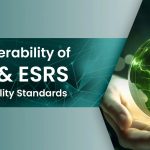The traditional IT distribution model is witnessing a green revolution. In today’s fast-paced world, two powerful forces—technology and sustainability—are reshaping traditional industries.
More than a fleeting trend:
While IT and solar energy have long been seen as separate fields, they are now converging, creating a fascinating new landscape within the distribution channel business. This is more than a fleeting trend; it’s a fundamental change that’s creating unprecedented opportunities for IT systems integrators and infrastructure service providers.
Historically, the solar panel distribution channel was a simple, multi-tiered system. This model is now being disrupted by the entry of major IT distributors like Ingram Micro and Redington. They are leveraging their expertise in logistics and supply chain management to capitalize on the booming smart solar solution market, which is projected to grow to over US 729 billion by 2034.
Secondly, as a vital component of the broader MSME sector, tier-2 SIs are making a significant contribution to the Indian economy. By providing crucial on-the-ground expertise in deploying and maintaining technology solutions, they are enabling businesses of all sizes to adopt new technologies, from solar rooftops to AI. This widespread digitalization, driven by these SIs, enhances productivity, creates local employment, and strengthens India’s overall economic resilience.
Distribution and the energy sector:
This convergence is happening because the energy sector is becoming highly digitized. The grid is starting to look more like a network, requiring IT professionals to add value beyond just hardware. They can now offer comprehensive solutions that bundle solar panels, inverters, and battery storage with IT hardware like network routers and servers.
This new energy cloud, formed by interconnected solar arrays and battery storage, presents a critical new frontier for cybersecurity. A compromised solar system is not just a hardware failure; it’s a potential vulnerability in the broader power grid. This is where IT systems integrators become indispensable, as they are the only partners equipped to secure these assets against cyber threats, manage performance with predictive analytics, and ensure data integrity.
Profitability and opportunities for systems integrators
The convergence of IT and solar presents a significant and lucrative opportunity for systems integrators, especially smaller tier-2 players.
While the initial margins on solar hardware can be slim, the true profitability lies in offering a full suite of value-added services. This is where IT channel partners can leverage their existing expertise to create new, sustainable revenue streams and secure a strong market niche.
The burgeoning solar market offers a unique chance for tier-2 systems integrators to thrive by leveraging their local expertise and agility. While larger tier-1 players focus on national projects, tier-2 integrators are perfectly positioned to serve the expanding residential and commercial (C&I) segments, which often require customized, hands-on solutions.
The average operating margins for the solar industry typically range between 12% and 16%. However, for Tier-2 integrators, the key to increasing profitability is to move beyond simple installation and focus on value-added services (VAS). These services, which help integrators transition from a transactional business to a relationship-based model, include:
Consulting and Audits: Offering an initial energy audit and financial advisory to help clients navigate complex government subsidies and financing options.
Integration with Other Technologies: Bundling solar solutions with battery storage, EV charging stations, and smart home technology to create a complete, integrated system.
Operation and Maintenance (O&M): Offering long-term service agreements for regular cleaning, performance monitoring, and repairs, which provide a crucial source of recurring revenue.
Project Specifics: Designing and installing innovative systems like hybrid systems that combine solar, grid power, and battery storage for improved reliability, especially in areas with frequent power cuts.
Our take
The integration of IT and solar is fundamentally changing the energy and distribution landscapes. This is not just a matter of efficiency and cost savings; it’s about building a more resilient and intelligent energy infrastructure.
For IT channel partners and infrastructure service providers, this convergence is a clear sign that the future of distribution lies in delivering integrated, intelligent, and sustainable solutions that are secure and highly functional.
For instance, the solar market is ripe with opportunity for systems integrators willing to expand their offerings. By focusing on value-added services, Tier-2 integrators can differentiate themselves, increase their profit margins, and build lasting customer relationships. This shift from simple installation to providing comprehensive, end-to-end solutions is the key to creating a sustainable and profitable business model in the new dawn of IT and solar convergence.












